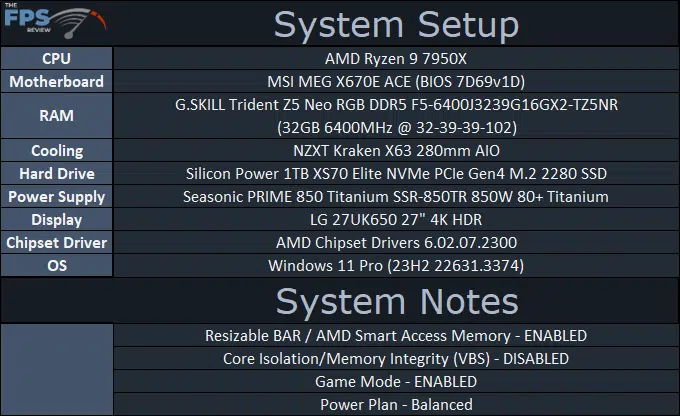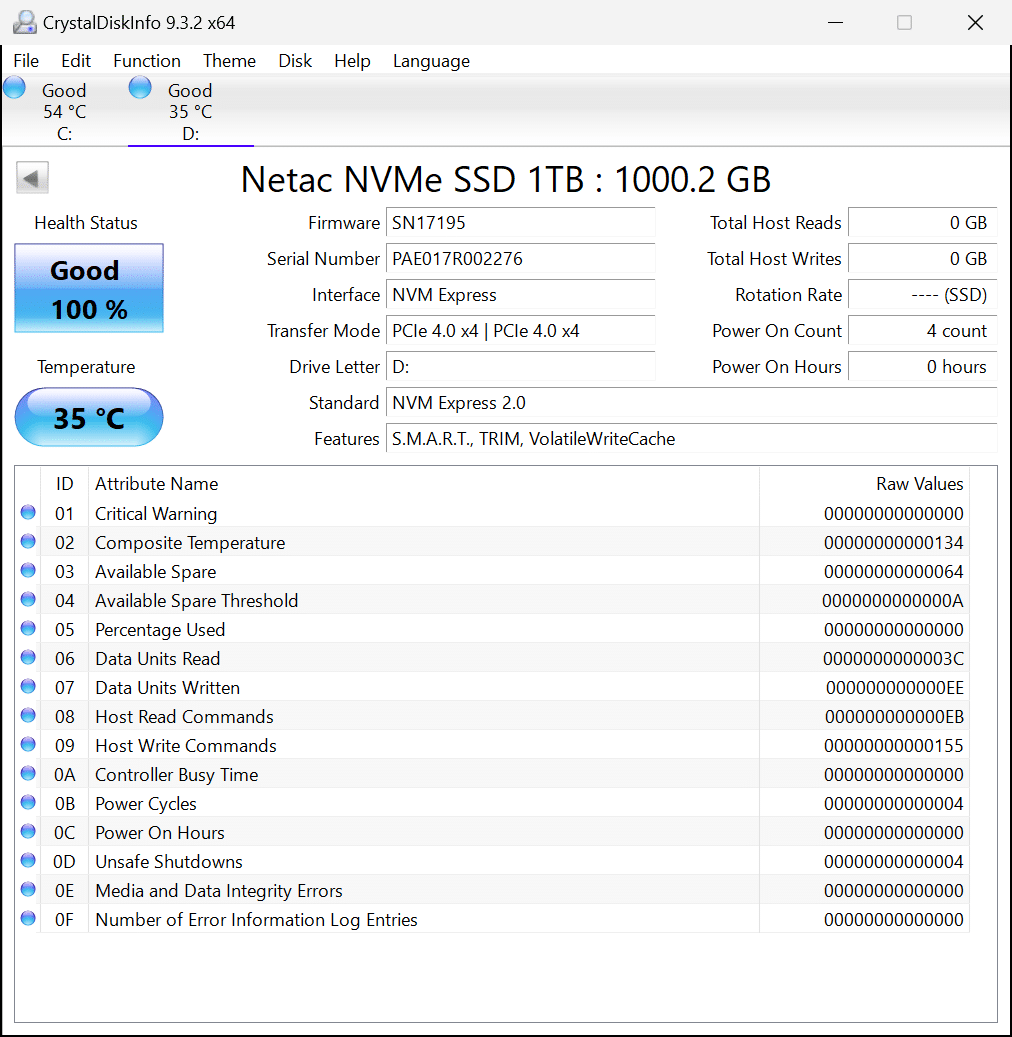Test Setup
Please read our SSD Storage Review Format and Methodology article for an explanation of our test system, how we test, procedures, and goals for SSD reviews. Note that the test system has been changed and updated as of this review, and moving forward, please refer to the System Setup table below for the details and specs on the new test system. All of the SSDs in this review have been re-tested on this new system setup, and all the SSD data in this review is fresh for this review.

We are using the motherboard’s current default BIOS settings. We are running the latest motherboard BIOS. We have Windows 11 Pro configured to run in the “Balanced” power profile. Windows has the latest updates. We are running the latest Win11 23H2 update from October 2023.
For our SSD comparisons today, we are including the Netac NV7000 and Netac NV7000-t as they are direct relevant comparisons to see how the new Netac NV7000-Q compares.
CrystalDiskInfo
Installation of the SSD went smoothly. In CrystalDiskInfo we can see information on the SSD below. We can see that the Netac NV7000-Q 1TB SSD has Firmware SN17195 installed and is running at PCIe 4.0 x4. The NVM Express protocol is misread, as it is specified to be NVMe 1.4, this software does not have updates that recognize this brand-new SSD that is just now launching.

